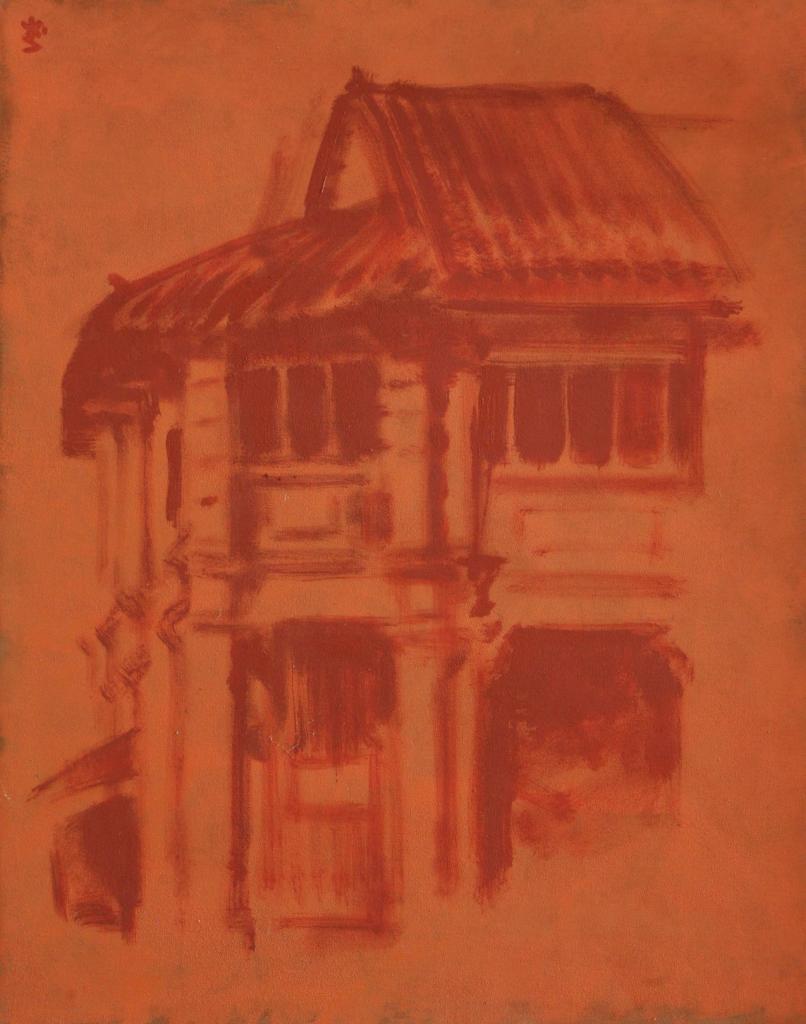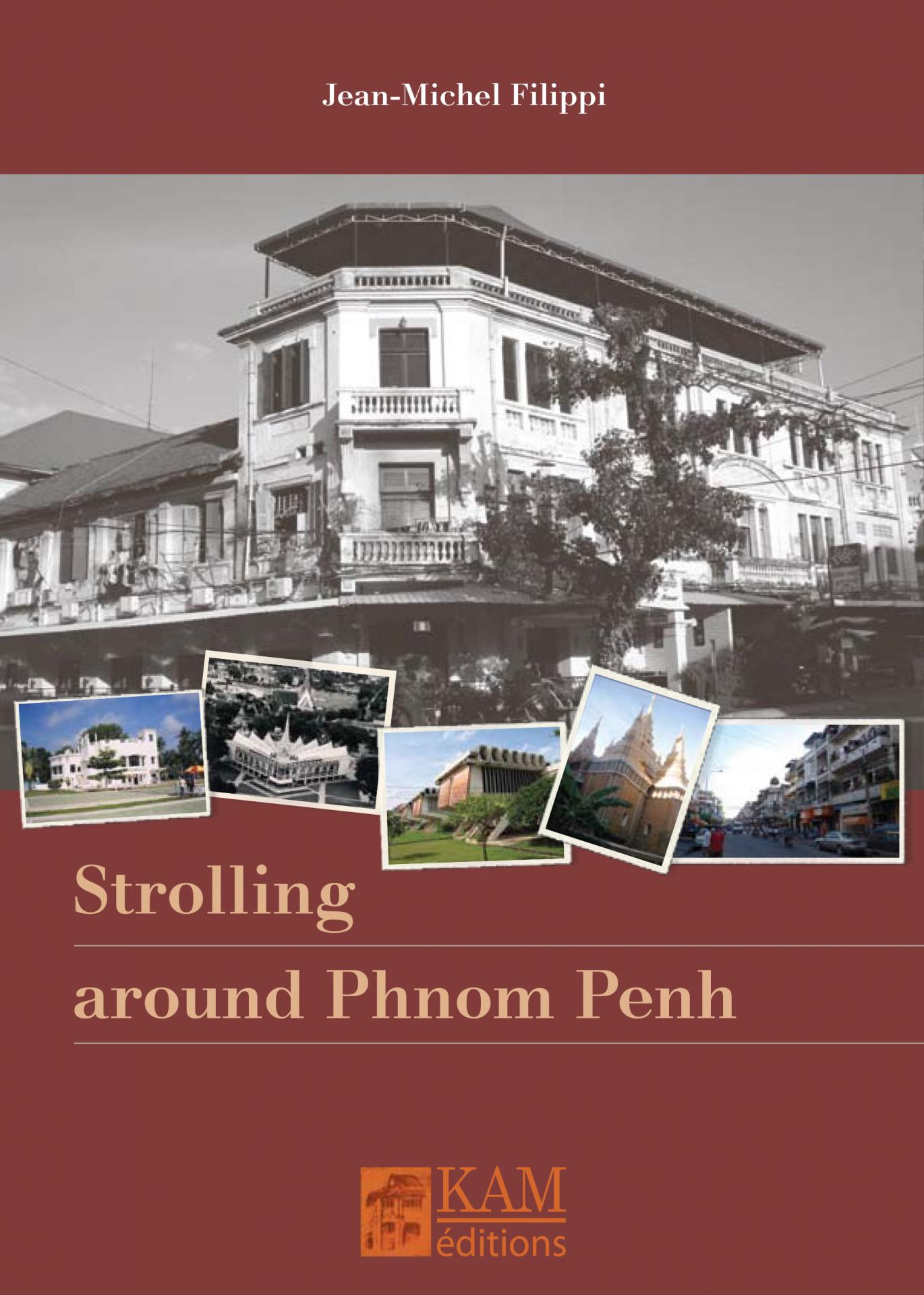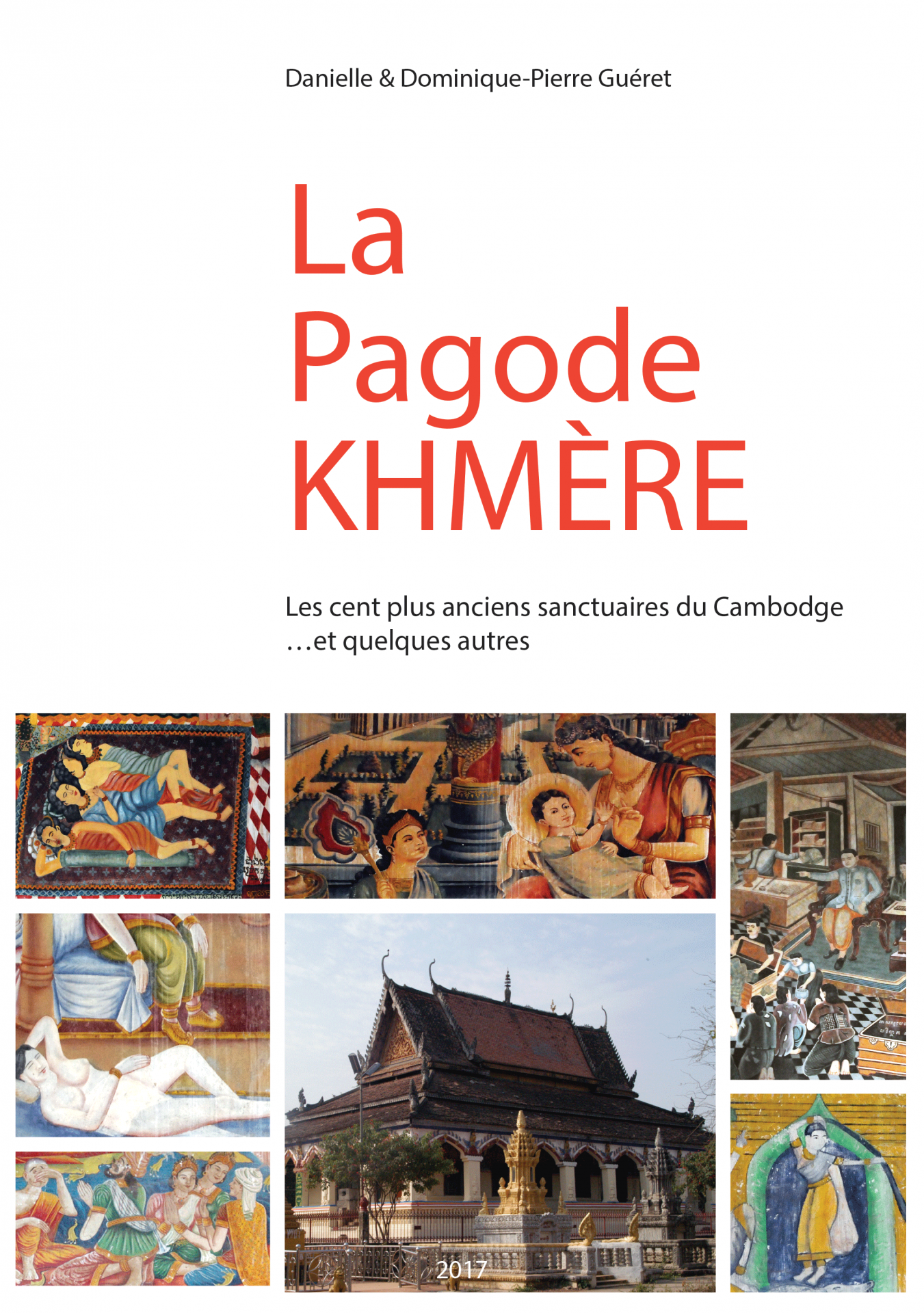Chinese Cambodian community: the swing of the pendulum
Contrary to what is implied by general concepts like “Overseas Chinese” or “Chinese  emigration”, the Chinese Cambodian community can’t be simply analysed according to a general model of Chinese expatriation or in analogy with the other Chinese communities in neighbouring countries. In fact, the distinctive features of a Chinese Khmer community have to be searched for in a three-centuries-old history. Even if it is tempting and maybe useful to refer to such concepts as “Chinese identity in Cambodia” or “Chinese Khmer identity”, it is an essential prerequisite to be clear about the content underlying these expressions. As far as ethnic groups are concerned, there are strong tendencies to consider that the concept of identity relies on immemorial characteristics.
emigration”, the Chinese Cambodian community can’t be simply analysed according to a general model of Chinese expatriation or in analogy with the other Chinese communities in neighbouring countries. In fact, the distinctive features of a Chinese Khmer community have to be searched for in a three-centuries-old history. Even if it is tempting and maybe useful to refer to such concepts as “Chinese identity in Cambodia” or “Chinese Khmer identity”, it is an essential prerequisite to be clear about the content underlying these expressions. As far as ethnic groups are concerned, there are strong tendencies to consider that the concept of identity relies on immemorial characteristics.
In Cambodia, in the case of the Chinese community (or maybe Chinese communities), we would be truly inspired in deconstructing this notion of identity. Identity is a construction and in no way a stable state. This constantly renewed construction has been very much influenced by the policies of the regimes which succeeded one another in Cambodia and which always had something to stipulate about the status of the Chinese who had settled in the Kingdom. In short, from a benevolent acceptance to various degrees of coercion, the Khmer Chinese situation can’t be analysed in the same terms as Vietnamese or Thai Chinese. We can even reasonably wonder if there is such a reality as Cambodian Chinese, when we take into consideration the considerable differences between groups we include conveniently in the label “Chinese”. First, there are language differences. What we call “Chinese language” doesn’t really exist: Mandarin, the official language of the People’s Republic of China and Taiwan, is spoken with many regional differences and the other sinitic languages display as many differences as could be found, let’s say, between English and German. Five of these sinitic languages were and are still spoken in Cambodia. If Khmer and Mandarin are used nowadays as a means of communication between the various Chinese groups, that was not the case not so long ago and two Chinese people who spoke only their own languages were simply not able to communicate. The linguist John DeFrancis was somewhat ironic when writing that “Chinese is not a language but a family of languages made up of a variety of mutually unintelligible languages”.
The notion of congregation and its post independence translation, the association, is precisely based on these ethno linguistic differences. The congregations played an essential part in the organisation of the social and cultural life of Cambodian Chinese. There were five congregations in Cambodia: Teochiu, Cantonese, Hakka, Hokkien and Hainan; the other Chinese groups, too small to set up their own congregation, had to join a congregation of their choice. The frontiers between congregations were strengthened because of the important sociological differences between the various Chinese groups and their distribution by branch of industry: Hainan were café managers and pepper cultivators, Hokkien scrap merchants, most of the garage owners and blacksmiths were Cantonese as well as sculptors, calligraphers and picture framers. This last occupation, very present in the first section of Charles De Gaulle Boulevard, still remains exclusively Cantonese.
In Oreussey market
Teochiu Chinese, the most important Chinese group in Cambodia, has a reputation for being the richest; Teochiu are to be found in all the most profitable businesses, amongst them pawn shops.
Geographical differences are not the least: Cantonese families have been living in towns for a long time, but many Teochiu have been living in the countryside and still constitute the first link of the rice commerce chain.
Marriage is another much debated question – marriages between Khmer and Chinese, but also marriages between Chinese from different communities. Marriages between Teochiu and Cantonese are extremely rare and Hakkanese would but exceptionally marry someone from another Chinese group.
The Chinese presence in Southeast Asia is very ancient and exchanges between Cambodia and China date back to the first centuries of the Common Era. Most of the information at our disposal about the first Hinduised kingdoms (Funan and Chenla) come from Chinese written sources, even if their compilation took place long after the described events occurred. One thing is certain: Preangkorian Cambodia (1st-9th centuries AD) was known to China and there were already Chinese dwellers in the Funan kingdom (1st-7th century). Chinese imperial annals are full of interesting details concerning the relationships between the two countries. For instance, we learn that in 535, Funan King Rudravarman I offered a living rhinoceros to the Jin dynasty Chinese emperor. At first afraid by the strange beast, the Chinese soon learned how to take profit from it. As a result, all the Southeast Asian rhinoceros were transformed into Chinese medicines. Closer to us is A record of Cambodia, the land and its people, written by Zhou Da Guan as he accompanied in 1292-1293 a Yuan dynasty diplomatic delegation which went to negotiate the price of the ransom to be paid to avoid war with Yuan (Mongol) China. Written in the 13th century, this text is the only existing description of the daily life in Angkorian time and it is the reason why it has been so praised. According to the record, there were Chinese settlers and their presence didn’t appear to be marginal. In any case, it is important to notice in the various records the existence of Chinese interests in Cambodia.
Understanding the Cambodian Chinese of the present time requires resorting to a three-centuries-old history. It is precisely in this three-centuries time period that emerged a peculiar logic resting on laissez-faire – coercion alternation; the current Cambodian Chinese social space has resulted in many respects from this logical framework.
Chinese Cambodian modern history has its roots in the events following the fall of the Ming dynasty in 1644. Very important migrations took place in 1679 when Cantonese Ming dynasty loyalist generals gave up the struggle against the newly established Qing dynasty and started emigrating with their troops to the Mekong delta region and the southern part of Cambodia. These mass arrivals of Chinese would have important political and economical consequences. This population was more prone to obey its own leaders than the authorities of the Kingdom of Cambodia. For instance, Chinese general Mac Cuu had exerted such a power over Kampot region for a century and a half that 18th century European travelers went as far as talking about the “Kingdom of Ponthiamas”, or golden fortress.
William Willmott described accurately the ambivalent status of the Chinese migrants in Cambodia in the period preceding French protectorate. Through marriages, many Chinese entered into Khmer society and adopted its traditions. Chinese communities
A Hainan family in the beginning of 20th century
which chose to “assimilate” had access to land cultivation as it was, for instance, in the case of Hakka Chinese in Takeo province, the Hainan Chinese in Kampot province and most of peasant Chinese populations. Another part of Chinese emigration decided not to assimilate; they nevertheless had access to entire fields of the Cambodian economy, like opium and gambling, which were soon under their exclusive control. This situation is all the more advantageous since Chinese, contrary to other foreign community members, could have access to high ranking administrative functions. Following this laissez-faire strategy, the French protectorate (1863-1953) was far less liberal towards the Chinese community. The protectorate authorities worried very much about the lack of control over Chinese activities. In order to put some control in place, the authorities had to rely on the congregations which were going to play a key part in setting up this new policy. In the case of a dispute where a Chinese was involved, the French protectorate authorities didn’t intend anymore to be dealing with individuals – from then on it was the duty of the five congregations to solve the problem. This system is not new but remarkably efficient; on the one side, it implied very limited means from the protectorate as the congregations did the job in exchange for a large autonomy offered to them and, on the other side, it contributed to atomise Chinese social space into smaller ethno linguistic communities with sectional demands. The fact Chinese people were very actively present in commercial activities was a cause for concern.
William Willmott, the famous anthropologist of Chinese people in Cambodia, had analysed the Chinese Cambodians with the notion of “plural society”. Coined by American anthropology in the ’50s, the concept of “plural society” characterises a society where the economic roles are based on ethnicity.
Pepper cultivation in Kampot region
It’s always the same old story: the Khmer is a rice cultivator and the Chinese a trader. In his masterpiece Le Paysan Cambodgien (The Cambodian Peasant), even Jean Delvert adopts this vision when he writes: “There is only one national activity: agriculture. The Cambodian is a peasant. He leaves almost all the other jobs to foreigners. In the reverse, he is the only one to cultivate the land. We think that it is rather unusual to find such a marked working specialisation” in the world. When J Delvert writes “Cambodian”, we have of course to understand “Khmer”. The literature of the protectorate doesn’t miss the opportunity to go a step further about these distinctions. Aymonier wrote in 1875: “In Cambodia, like anywhere else, they are arrogant and corrupting” and we can find choice cuts in the 1899 issue of La Revue Indochinoise: “… this question always so full of interest of the Chinese invading our colonies and taking everywhere positions which could be so usefully held by French traders…”.
This kind of recrimination has also been shared by a few Cambodian writers, judging by the strongly anti-Chinese tone of some of Kram Ngoy’s (1865-1936) pieces of poetry. At that time the Chinese were progressively banned from administration and from the economy’s profitable sectors. This exclusion policy went on during the Sangkum Reastr Niyum, or People’s Socialist communities, (1955-1970), notably with the nationalisation of the rice distribution network. Without any exaggeration, we can say that the Chinese acquired the reputation of usurer in the time of the French protectorate and the SRN. The Qing’s Manchu dynasty considered overseas Chinese as a pack of disreputable people who had been deprived of Chinese nationality. For Cambodian Chinese, Chineseness as a national fact had its roots in two significant dates: The Kuomintang rise to power after the 1911 revolution and the proclamation of the People’s Republic of China in 1949. The fact there was a Chinese state which recognised expatriate Chinese communities was going to change considerably the deal for the French protectorate as well as for the SRN. Besides, Prince Sihanouk never hid his irritation when faced with the Chinese Cambodian patriotic expressions towards PRC or the role to propagate Maoist ideals the Chinese Association in Cambodia had claimed for itself. The March 18, 1970, coup d’état which overthrew Prince Sihanouk’s regime and abolished the monarchy resulted in a higher degree of coercion towards Chinese Cambodians.
Ohier street (1913), in the center of Phnom Penh Chinese district
In May 1970, all the Chinese schools were closed down and the new regime, at least in its initial stage, entirely excluded the Chinese. During the Khmer Republic, the prevailing view elaborated by the Khmer Mon Institute considered Khmer people as a superior racial expression and took Chinese and Vietnamese as targets. At that time Khmerism and fear of the Chinese Khmer communist contamination combined to exclude the Chinese.
The Khmer Rouge’s seizure of power and the evacuation of the towns dealt a severe blow to Chinese Cambodians. Up to 200,000 Chinese are estimated to have died between 1975 and 1979; most specialists don’t talk of genocide and agree on the fact that the Chinese were mainly victims of the forced evacuation, the failure to adapt to the new environment, famine and, in a few zones, executions.
Succeeding the Khmer Rouge regime, the People’s Republic of Kampuchea, or PRK, put into practice an open discrimination policy against the Chinese minority. One of the main causes appears to be the hostile climate between Hanoi and Beijing and the fear that Cambodian Chinese could be a fifth column against the newly established PRK. Another cause may have been the will to prevent Chinese commerce restoration. Whatever the reason, in the beginning of 2002, the 351 decree recommended a complete filing on the Chinese population. Considering the means at the disposal of the PRK in those years, we have difficulties imagining the efficiency of such measures. In the beginning, Chinese did not have access to the towns, only later did they have the possibility to settle. Some events can’t be easily quantified and thus can hardly become objective facts for the historian. Do we necessarily have to neglect them? Many interviews highlight a considerable increase in Chinese Khmer marriages from 1980 onwards. As a high degree of endogamy characterises the way of life of overseas urbanised ethnic Chinese, the fact is exceptionally important. In the ’80s, what is at stake is simple and for various geopolitical reasons which they certainly don’t understand, Cambodian Chinese are undesirable: they are barred from access to the party and administration of the People’s Republic of Kampuchea and private commerce is not in the regime’s good graces. Marriage is one integration strategy and the historical record of Chinese Khmer marriages will be reached between 1980 and 1988; at that time, as the withdrawal of the Vietnamese troops is obvious, the Chinese Khmer marriages will decrease as if by magic.
From 1989 onward, as it becomes possible to sell real estate, Chinese families began settling back down in their district of origin: the evolution in progress is slow, but perceptible. From now on the loop appears to be looped and, as if a 130-year history (1863-1993) had been put a parenthesis, it appears that we covered the whole cycle to be back to the period preceding the French protectorate. Nowadays, with the blessing of the People’s Republic of China, Cambodian Chinese life reasserts itself.
The Tuan Hua school in Phnom Penh
Elsewhere in Southeast Asia, things would be much clearer: assimilation policies, Chinese activities strictly restricted to commercial spheres, very limited access to administration etc. In Cambodia prior to the French protectorate, a loosely organised space allowed Chinese people to integrate into Khmer society or to refuse to do so, to be a comprador or to join the administration. The slow structuring of Cambodian space from the time of the French protectorate won’t spare the Chinese minority of which the sphere of activity will be progressively diminished to be reduced to nothing … to finally regain its original prerogatives.
Jean-Michel Filippi








